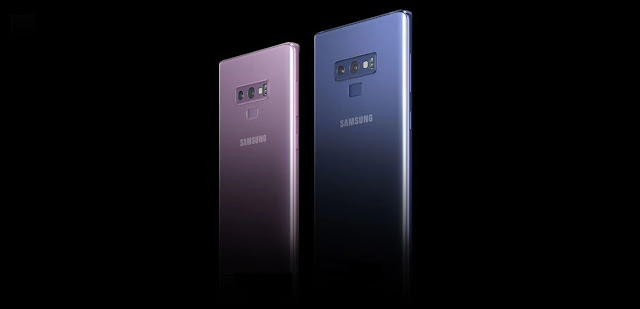WHY DOES MY MOBILE BATTERY DRAIN SO FAST?
We explain
the main reasons that make your smartphone's battery spend very fast, and how
you can improve its autonomy simply.
Why the battery of my cell phone is spent so fast
A fairly a common problem today is that the battery of our smartphone does not hold all
day, which forces us to go through the charger before the end of the day. Gone
is the time when we had to charge the mobile once a week, or even every two
weeks. In this article, we explain the main reasons that make your mobile
battery drain very fast, and how you can try to improve its duration.
THE PROBLEM OF SHORT BATTERY LIFE
All current
smartphones are energy-consuming, which causes the battery charge to run out
much faster than we would like. Large screens, very powerful processors, 3D
games with advanced graphics, applications that notify us of everything that
interests us and much more. All this is not free and has a very high cost in
the energy consumption of the device.
The duration
of our phone's battery charge depends a lot on what we do with it. It is not
the same to be an hour playing than to be an hour writing messages on Whatsapp.
Video games are usually the most demanding applications with hardware, and
therefore the ones that consume the most energy. This means that if you spend
the day playing with your mobile, you will have many ballots so that you do not
reach the end of the day.
The battery capacity of a smartphone is expressed in milliamps per hour (mph), the most
normal being between 2000 and 5000 mAh. A higher capacity battery should offer
a higher autonomy, although this is not always the case since it depends on
many other factors. Among these factors, we have the efficiency of the
processor used, the efficiency of the screen, and of course, we cannot forget
the use that the user gives it.
Knowing the battery capacity of our smartphone is quite simple, we can do it by looking
directly at the battery, or using an application if we cannot remove the battery,
something that is increasingly common. CPU-Z is one of those applications that
we can use.
The battery capacity of a smartphone monitor
THE APPLICATIONS THAT CONSUME THE MOST ENERGY
A few years
ago Android informs us of the applications that consume the most energy. We can
know this is a very simple way from the battery section, which we will find
within the settings of our Android smartphone.
The tool
shows us all the main applications and the main services that have been working
on our phones. The ones that appear in the first position are the ones that
have consumed the most energy, we can even see the percentage of the load that
each of these applications or services has devoured.
Monitor the
applications that consume the most energy
This can be
very useful for detecting applications that are consuming too much energy. The easiest solution would be to uninstall these applications, although it may be
an application that we need to use, so we cannot always uninstall it.
DOES YOUR MOBILE HEAT UP?
A very high
energy consumption usually causes our smartphone to get quite hot, therefore,
it is a fact that we can also use to identify the applications that are
consuming more energy.
This is
something that can be verified very simple, simply run a game for about 20
minutes, and you will see how your terminal heats up much more than using other
applications, such as WhatsApp or the Internet browser.
If you see
that your smartphone gets very hot when you are using an application, it means
that the application is consuming a lot of energy, so you should consider
stopping using it to improve the autonomy of your device.
BEWARE OF SOCIAL MEDIA NOTIFICATIONS
Notifications
from social networks are something that can also cause a lot of energy
consumption of our BD mobile price, especially if we use a lot of these services.
The
notifications of Facebook, Twitter, Pinterest, Linkedin and the rest of the
social networks, make our smartphone continuously synchronize the data with
these services, to notify us of all the news. This requires a lot of work to
the processor, and it is something that is done for dozens of times throughout
the day, causing a large amount of battery to be consumed.
Social media notifications
A fairly a simple way to solve it is to increase the interval for checking new
notifications. For example, if you are checking for new notifications every 10
minutes, you can change the settings to do so every one or two hours. In this
way the number of requests for information will be drastically reduced, greatly
reducing energy consumption.
SYNCHRONIZING ACCOUNTS
The timings
of the accounts is another aspect that consumes a lot of energy. In this case,
something quite similar to social media notifications occurs. If you have many
active accounts on your smartphone with data synchronization activated on all
of them, a large number of requests will occur throughout the day, causing the
processor to be running and consuming battery power for a long time.
Synchronizing Accounts
WhatsApp,
Telegram, Google Calendar, Google Drive, Dropbox, Gmail, Outlook ... there are
many services that you can have active, and that are synchronizing data with
the accounts continuously Do you need to have them all working?
THE USE OF THE NETWORK ALSO INFLUENCES
Being
connected to the Internet also consumes a lot of energy constantly. Besides,
the power consumption increases even more if you are connected to a network
with a low signal. The latter is because the device will have to make a greater
effort, to obtain and send the data it needs to function.









No comments